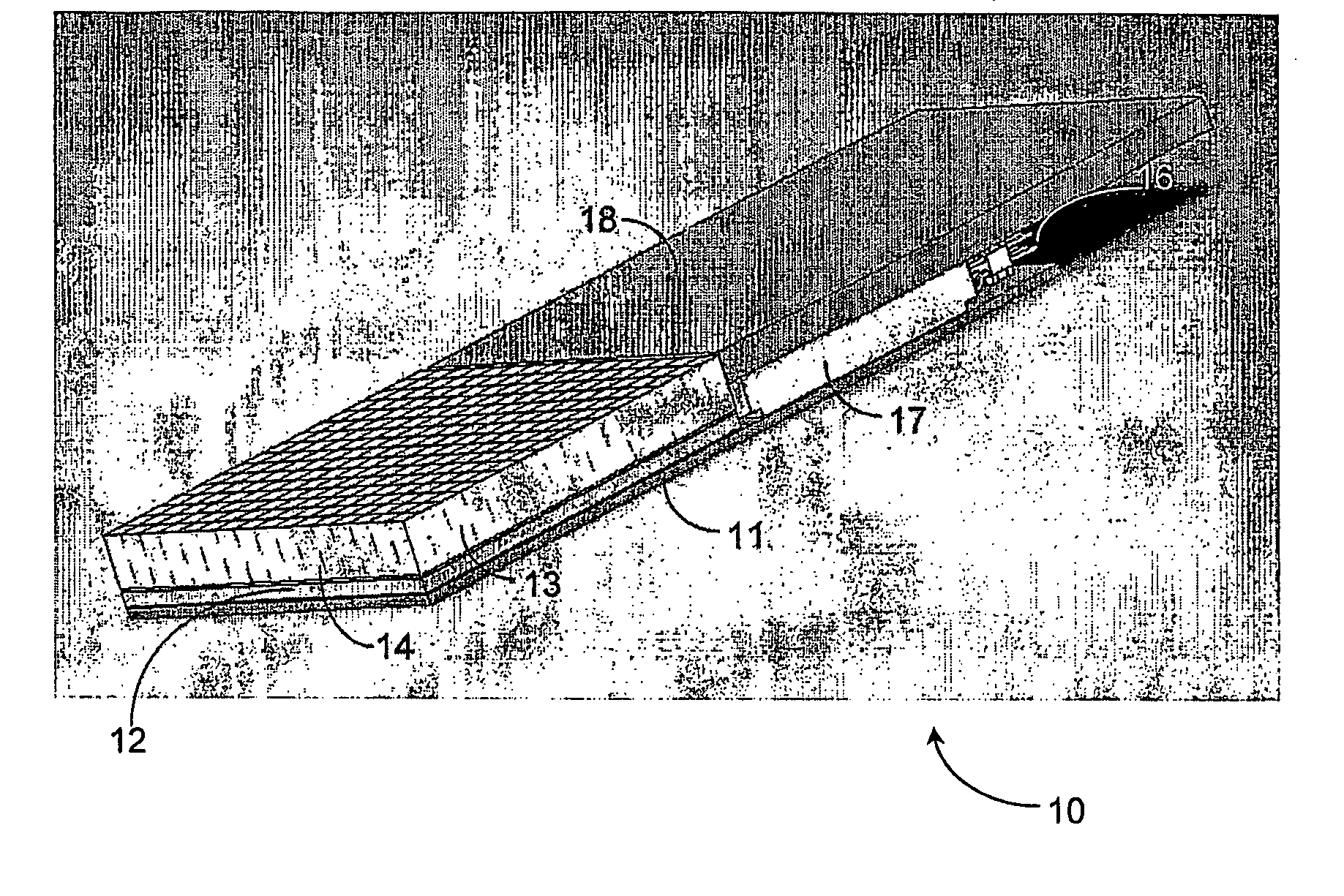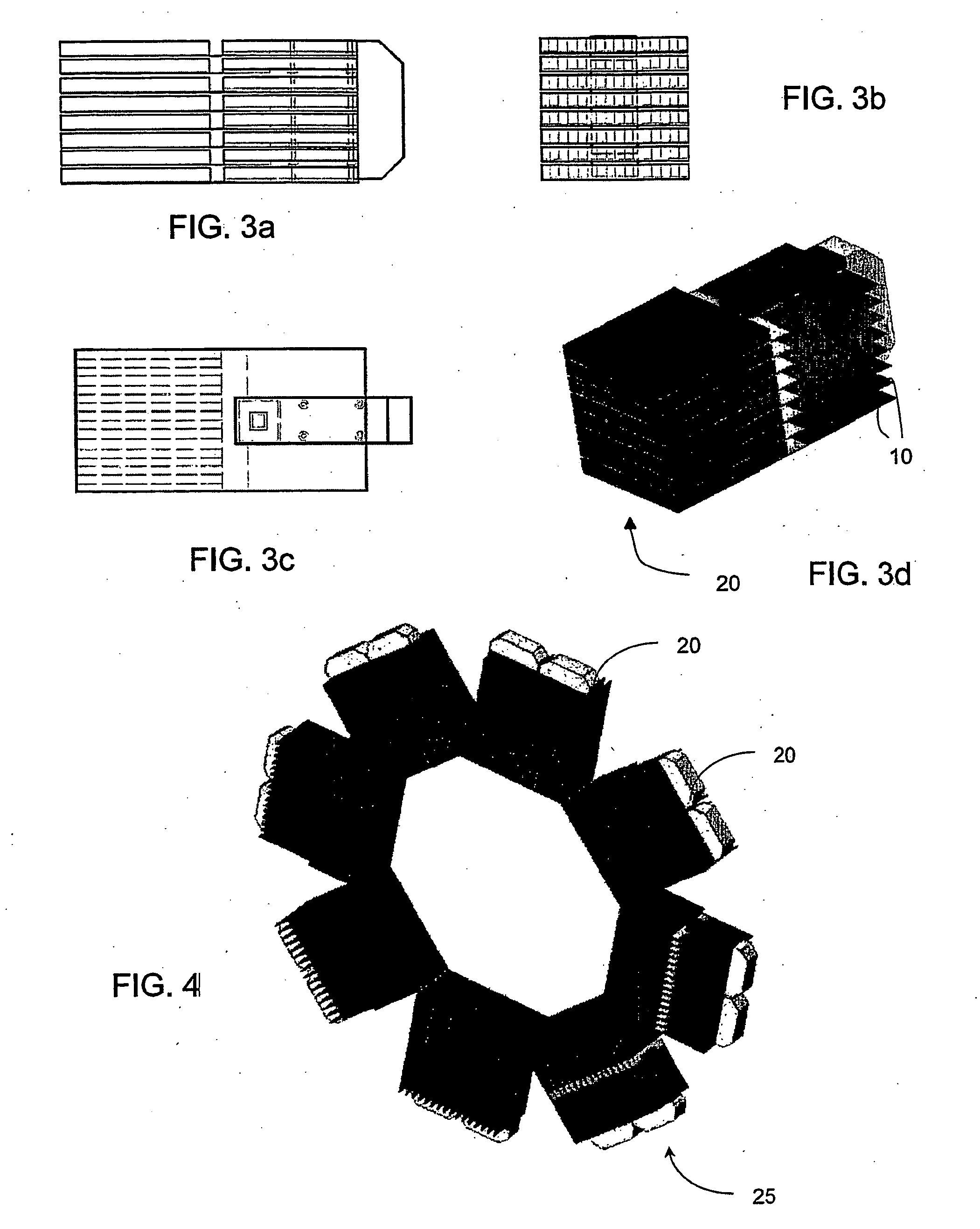Modular radiation detector with scintillators and semiconductor photodiodes and integrated readout and method for assembly thereof
a module radiation detector and semiconductor photodiode technology, applied in the field of radiation detection, can solve the problems of inability to measure the point of interaction along this axis using conventional techniques, difficult to relate signals from a compton scattered event to their signals,
- Summary
- Abstract
- Description
- Claims
- Application Information
AI Technical Summary
Benefits of technology
Problems solved by technology
Method used
Image
Examples
Embodiment Construction
[0066] The drawings illustrate examples of a radiation detection module, and the arrangement of several modules in a package, and the arrangement of several packages in a polygon and cylinder. Specifically, the drawings show the assembly of scintillator arrays and photodiode arrays and readout ASICs with respect to each other. The number of crystals and their aspect ratio are shown as an example, and choices can be made depending on the application and requirements.
[0067]FIGS. 1 and 2a to 2d show respectively pictorial and schematic representations of a detector module depicted generally as 10 having a carrier board 11 on which is mounted a planar silicon photo-diode array 12 juxtaposed to an upper surface of which is mounted a planar scintillator array 13. An exposed edge 14 of the first row of scintillator elements constitutes a first edge of the scintillator array through which photons striking the detector module propagate through successive scintillator elements of the scintil...
PUM
 Login to View More
Login to View More Abstract
Description
Claims
Application Information
 Login to View More
Login to View More - R&D
- Intellectual Property
- Life Sciences
- Materials
- Tech Scout
- Unparalleled Data Quality
- Higher Quality Content
- 60% Fewer Hallucinations
Browse by: Latest US Patents, China's latest patents, Technical Efficacy Thesaurus, Application Domain, Technology Topic, Popular Technical Reports.
© 2025 PatSnap. All rights reserved.Legal|Privacy policy|Modern Slavery Act Transparency Statement|Sitemap|About US| Contact US: help@patsnap.com



